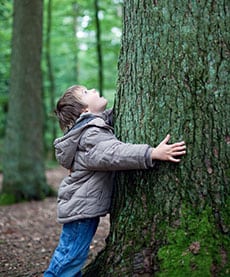What do birds eat and how do they eat it?
Look at some bird pictures and point out the beaks, explaining that every bird has a beak that is shaped to help it hunt and eat its own food. Then you can try out these techniques:
Eat like a robin: Embed gummy worms in a cake pan full of packing noodles. Have the child try to spear the gummy worms with tweezers.
Eat like a hummingbird: Have the child suck up a little sugar water, using a straw for a beak and fitting the straw through a hole in a piece of paper or foil covering a glass.
Eat like a cardinal: Use a nutcracker to crack sunflower seeds or something of similar hardness. Point out the wide, strong beak of the cardinal. Perhaps you can make a beak that is like that of a cardinal.
Eat like a woodpecker: Help a child peck hard at an old piece of wood with a screwdriver or other hard, pointed object; you can keep your hand over the child’s to prevent a drilled thumb or finger. You can put Cheerios on the other side and draw those out to show that the woodpecker has successfully found the insects. Roll a small piece of paper into a funnel shape and coat it with a little honey to show the long, sticky tongue that is going to pull out the Cheerios.
Eat like a flycatcher: Put a cheerio on a string and have the child perch on an ottoman or small chair and try to snatch the cheerio as you swing it by. Then, have him “fly” after the insect/cheerio as you whisk it around the room.
Eat like a finch: Put some Rice Krispies in a small cardboard box with holes in it; have him get the krispies with tweezers.
Eat like a chickadee/sparrow, etc.: Put the cheerios in a bowl and let him eat – no hands allowed.
Eat like an eagle, hawk, etc.: Let the child pounce on a small stuffed animal – you can add the sharp or hooked beak and talons when the child is old enough not to be frightened by that aspect. According to the age of the child, you can show the various kinds of woodpeckers, flycatchers, finches, etc.
Meet a Tree!
Touch a tree; rub your cheek on the bark. Is it rough or smooth?
Is this tree alive?
Can you put your arms around it?
Is it older than you are?
Can you find plants growing on it?
Do you see or hear any birds in the tree?
Any squirrels?
From Sharing Nature with Children, Joseph Cornell
Trees as Habitats
What are some plants and animals that depend on trees?
What do trees provide for these plants and animals?
Can you see signs of life on the trunk, branches, roots, and leaves?
How is a tree affected by the plants and animals that live on it?
From Project Learning Tree, Forest Foundation
Attract Hummingbirds
Hang a hummingbird feeder in a spot where you can easily see it. Since hummingbirds are territorial, you might want to hang two, one in front and one in back.
Food: 1 part sugar to 4 parts water. Boil the water to kill bacteria or mold. Add the ¼ cup sugar to 1 cup water. Cool. Excess mixture can be saved for up to two weeks in the refrigerator.
Do not add food coloring, honey (it ferments), or sweetener.
Clean at least once a week, more often if water gets cloudy. To clean, use 1 part white vinegar to 4 parts water: rinse 3 times to make sure all vinegar is gone. If mold develops, clean with a 10% bleach solution and rinse several times.
Water will keep out ants; many feeders have water containers on top.
Flowers with bright, rich colors are most likely to attract hummingbirds; long or tapered shapes help to accommodate the long bills. Native species are preferred. Some flowers that are likely to attract hummingbirds are bee balm, cardinal flower, zinnia, salvia, bleeding heart, lupine, columbine.
You can make your own feeders with tall, narrow bottles and feeding tubes, which come 12 to a pack.
Adapted from 11 Fun Ideas for Exploring Nature with Kids by Jennifer Johnson
With simple hand lenses, explore in minute detail such wonders of nature as the hairs on leaves or the intricacies of flower parts.
Match nature’s colors: Put crayon, marker or colored pencil color markings on index cards and match with findings in nature. How many shades of green and brown can you find? Can you find all colors of the rainbow?
Summer Outdoors
Many ideas for summer fun for kids and their families in Summer Activities: Nature Activities for Children, by Irmagard Kutsch, Brigitte Walden (illus.).
On a rainy day, go outside during or after a rain to listen, smell, touch and see its effects. Ideas from Listen to the Rain, by Bill Martin Jr. and John Archambault.
If it is raining, would you describe it as soft and slow, roaring and pouring, hurly-burly, topsy-turvy, ligihtning-flashing, thunder clapping, sounding pounding roaring or dripping.
- Can you see raindrops of different sizes?
- Can you find any animals moving during or after a rain? Which ones?
- Which plants still hold some rain drops in certain places? Where?
- What can you smell after a rain?

